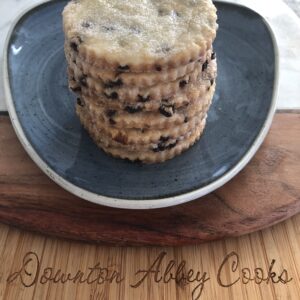Jump to Recipe
 With Easter just around the corner, it’s time to explore the delightful tradition of Easter biscuits, which have their roots in the rural regions of western England. These delectable Easter cookies have been a beloved part of Easter celebrations for centuries, and their history is as rich as their buttery flavor.
With Easter just around the corner, it’s time to explore the delightful tradition of Easter biscuits, which have their roots in the rural regions of western England. These delectable Easter cookies have been a beloved part of Easter celebrations for centuries, and their history is as rich as their buttery flavor.
Origins in the West Country
The West Country, comprising counties like Dorset, Somerset, Devon, and Cornwall, is renowned for its unique culinary heritage, and Easter biscuits are one of its most cherished contributions. These biscuits, also known as Easter ridgway biscuits or Easter ridgway bread, are believed to have originated in the rural communities of the region, where they were baked as part of the Easter festivities.
Ancient Pagan Roots
The tradition of Easter biscuits can be traced back to ancient pagan customs that celebrated the arrival of spring and the fertility of the land. In pre-Christian times, baked goods were often crafted in symbolic shapes, such as circles or rings, to represent the cycle of life and the sun’s journey across the sky.
Christian Adaptation
As Christianity spread throughout England, many pagan traditions were adapted and given new meanings. The Easter biscuits, with their circular or ring shape, became associated with the resurrection of Jesus Christ and the eternal cycle of life, death, and rebirth.
Baking Traditions
In the West Country, the baking of Easter biscuits was a communal affair, with families and neighbors gathering to prepare the dough and shape the biscuits. The process was often accompanied by songs, stories, and festivities, creating a sense of community and shared heritage.
Regional Variations
While the basic ingredients of Easter biscuits remained consistent across the West Country – typically including butter, flour, sugar, and spices like cinnamon or nutmeg – each town or village developed its own unique variations. Some added dried fruits or candied peel, while others incorporated locally sourced ingredients like Devon cream or Somerset cider. In Somerset traditional recipes include Cassia oil, in the belief that it was used in the embalming process used to clean Jesus’s body after his crucifixion.
Modern Revival
Although the popularity of Easter biscuits waned in the 20th century, there has been a resurgence of interest in recent years as people seek to reconnect with their culinary roots. Artisanal bakeries and home bakers across the West Country have revived the tradition, ensuring that these delicious treats continue to grace Easter tables for generations to come.
Whether enjoyed with a steaming cup of tea or served alongside other Easter treats, the West Country’s Easter biscuits are a delightful reminder of the rich cultural heritage that has shaped the region’s culinary traditions. So, this Easter, indulge in these buttery delights and savor the history and flavors that have been passed down through generations.
English Easter Biscuits
Ingredients
Cookies
- 3/4 cup butter
- 1/2 cup caster sugar blitz sugar in a blender
- 1 large egg yolk use the white for the topping
- 1 medium lemon yested
- 1 3/4 cups unbleached all purpose flour
- 1/2 tsp. mixed spice or cinnamon
- 1/2 cup currants (or chopped raisins)
- 1-2 tbsp. milk
Topping
- 1 large egg white
- 2 tbsp. caster sugar
Instructions
- Line a baking tray with parchment and pre-heat the oven to 350F.
- Cream the butter, sugar and lemon rind until light & fluffy. Work in the egg yolk, then stir in the flour and currants. Add a little milk if needed. Knead lightly until smooth. Flatten and wrap in plastic wrap and place in the fridge for an hour.
- Roll out the dough on a lightly floured surface to 1/8 of an inch thick. Cut into rounds with a 3 inch round cookie cutter, fluted in you have. Brush with a little egg white, dredge with caster sugar, lift onto a baking paper-lined tray & bake for 12–15 minutes or until just golden brown.
- Lift onto a wire rack & leave to cool. Store in an airtight container.

